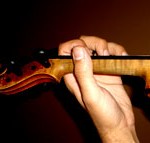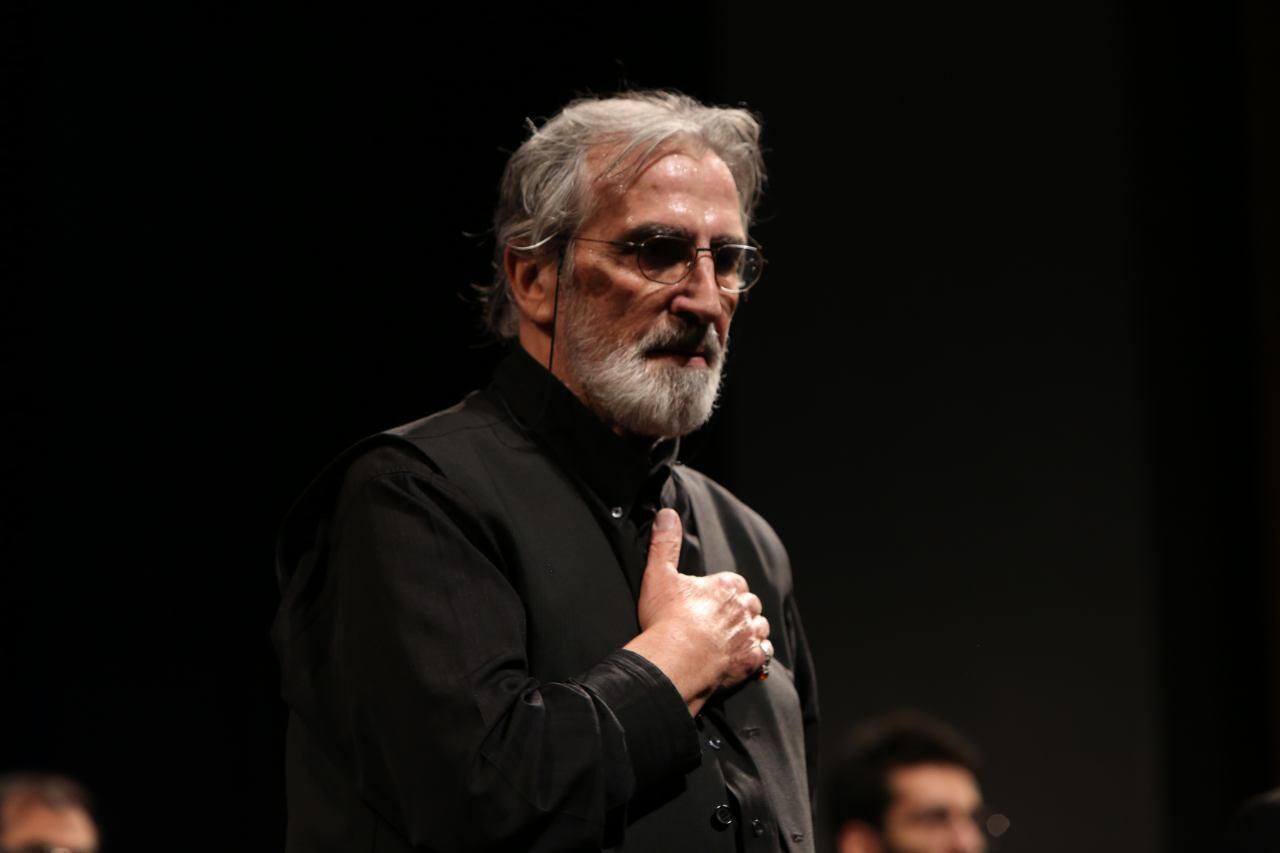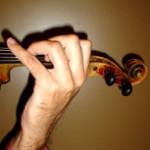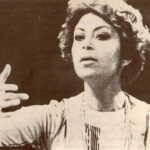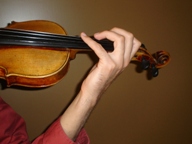
Pattern number 2/1:
Points on the left hand:
2/1/1- Hand’s twist
While standing, human being’s palms are in a parallel position to his body.
Since for playing violin, it’s necessary that the player’s palms and fingers be inclined toward the fingerboard, therefore, the player, while bringing up his hand, should turn it toward the fingerboard.
2/1/2- the place of hand on the fingerboard
Normally, the player’s hand on the instrument neck is in accordance with the first position of the left hand. In such a condition it is necessary that the thumb be placed just across the first finger’s place on the fingerboard, and it’s better to keep the thumb in the same position, neither before nor after the first finger’s position (on the other side of the neck).
NB 1:The touch point of the first finger with the fingerboard in the above case is supposed to be Whole-tone far from the nut. This does not, however, mean the placing of the first finger while it is drawn back with a Half-step distance from the nut.
To place his hand on the first position, while bending his hand from elbow, the player should hold his left arm a little farther from the body, in this position, the elbow also stands farther (so the arm moves up). Firstly, this makes the palm stay at a distance from the player’s body, move forward and acquire the first position. Secondly, the instrument and its neck remain in a horizontal direction compared with the ground. (See 1/1/2)
NB 2:The important point to be taken into account is that there is no need for the player to move the left shoulder forward in order to move the left arm and “set it into motion”. Some, mistakenly, when holding the instrument, in order to incline the violin toward the chest, twist their left shoulder to right and in fact bend the shoulder toward the chest. Applying any of these positions is wrong making the left shoulder move out of the line of the neck and the shoulder.
Indeed, for better understanding of this point, “articular role” of the shoulder should be considered. The shoulder joint, makes the twisting of the arm possible without the need to move the whole shoulder area and a part of the left side of the chest.
2/1/3- wrist
Naturally, when dropped, the wrist is in line with the forearm. While bringing up the hand and holding the instrument, it should not be twisted outwards or inwards or moved out of the direction of the forearm (in the first condition, the hand is idiomatically in the form of begging and in the second condition the wrist is protruded) or be bended sideways or twisted to the left or the right either.
NB 3: While playing it is only in the lower position of the left hand that the wrist and the forearm can remain in line with each other. It is necessary that the player does his best to maintain this position.
NB 4:In the general conditions of playing, keeping the wrist and forearm in line is desired. But, sometimes, in order to have a better performance, especially in playing some four string chords or trills, the wrist can be moved out of this position and bend inwards or outwards.
NB 5:If the player’s wrist is twisted inward, despite from being in trouble when changing the position, his fingers may collide with each other and be stuck. On the other hand, the player cannot place his fingers on the fingerboard with dominance.
NB 6:If the wrist is twisted outward, it is necessary that the player move it out of the usual form and shape in order to get to the desired note. Moreover, noting to the player’s fingers moving further than the instrument’s (supposed) fret (because of the pulled back form of fingers as a result of the moved back wrist), there is the possibility that the fingers don’t reach to the desired note which causes playing out of tune. Also the permanent twist of the wrist outwards, is painful in the long run.
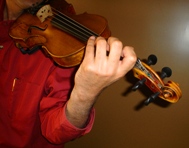
The correct placement of the left hand on the fingerboard
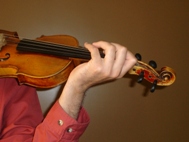
Wrong Inward Twist of the Wrist

Wrong Rightward Twist of the Wrist

Wrong Outward Twist of the Wrist

Correct Position



